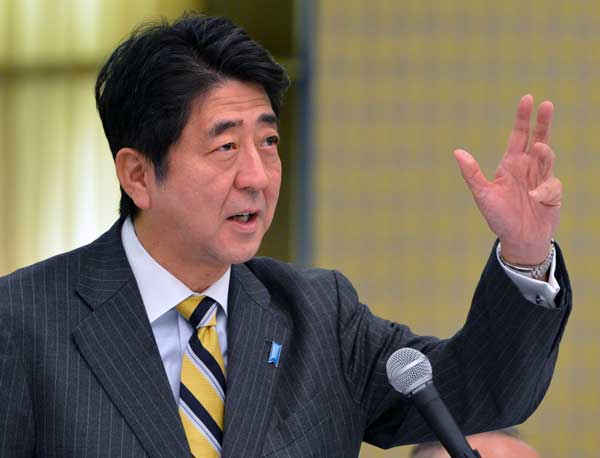IDR Blog
Japan- Enhancing Security & Military Profile in Indo-Pacifc
Japan imperceptibly but surely is engaged in enhancing its security and military profile in a comprehensive manner which augurs well for overall Indo Pacific security and stability in what can be described as a joint but undeclared collaboration of the United States, Japan and India to provide an existential counterweight to China’s worrying military rise generating turbulence on its peripheries.
Japan is no ‘pushover nation’ militarily by any nation harbouring aggressive designs or to coerce Japan. Japan on its own right has strong military forces even within the ambit of Self Defence Forces backed by advanced indigenous defence production infrastructure. That Japan has not been militarily assertive so far arises from Japan’s security environment that was relatively peaceful till 2008 or so. Since then, China switched over from its ‘Soft Power’ strategies to ‘Hard Power’ aggressive brinkmanship generating security turbulence in the Western Pacific.
China was tempted towards military aggressive postures and military coercion against Japan by disputing Japanese ownership of the Senkaku Islands on the lines of its misadventures in the South China Sea against weaker nations. Japan stood firm forcing China to rethink.
Japan’s enhancement of its security and military profile in the light of above factors therefore cannot be attributed to Japan’s reverting back to militarism but a well thought out and prudent step to equip itself to meet the emerging challenges to Indo Pacific security and also specifically to repel any aggression against Japan itself.
The rise of a militarily assertive China next door to Japan and the way geopolitical constellations are moving resultantly generate imperatives that the United States military postures in Indo Pacific are supplemented by Japan and India in whose threat perceptions China figures as the foremost threat. Japan and India are expected in Asian capitals as pivots of Indo Pacific security to rise and be counted as such.
Japan is fortunate that at a critical juncture when the Japanese security environment has emerged as turbulent and unpredictable calling for Japan’s enhanced military profile to meet likely security challenges, has at its helm Prime Minister Shinzo Abe who has consistently advocated for changing the security limitations imposed by Japan’s Peace Constitution imposed after Japan’s defeat in Second World War. Under his leadership Japan is currently engaged in a graduated buildup of its defence capabilities.
Prime Minister Abe has well continued the defence build-up of Japan towards a strong and assertive defence posture—- in the traditions initiated by earlier assertive Japanese Prime Ministers like Nakasone and Koizumi. In fact PM Abe has moved ahead in terms of sensitising the Japanese public of emerging threats to Japanese security and pending amendments of the Japanese Peace Constitution has taken the administrative facilitation routes to build up Japanese Armed Forces as I prefer to call them. PM Abe also has widened the scope of overseas deployment of Japanese Forces for UN Peacekeeping operations, naval patrols in Gulf of Aden, joint military exercises overseas and has called for Japanese arms exports.
In view of China’s full-spectrum dominance of the South China Sea and its looming shadows over the Indian Ocean facilitated by Pakistan actively furthering China’s flagship project and the Pakistani Port of Gwadur at the terminal end of the CPEC as a logical Chinese naval base, the United States this year redesignated its erstwhile US Pacific Command as US Indo Pacific Command. The wider encompassment of the Indian Ocean also brings into focus the enhanced roles expected of India along with Japan in the overall US-led security-enhancement of the Indo Pacific Region.
Japan’s lifelines of commerce and energy security traversing the South China Sea have already become vulnerable due to China’s control of the South China Sea with China’s ability to interdict these. The extension of Japan’s maritime lifelines traversing the Indian Ocean is also a matter of logical concern for Japan, with increasing Chinese intrusive presence in the Indian Ocean and China’s Maritime Strategy 2015 calling for China’s “naval presence in distant seas” all the way to the Mediterranean.
Japan’s strategic concerns find resonance and convergence with similar concerns of the United States and India. Also sharing these strategic concerns are the major West European countries who have asserted that they too have stakes in the security of the South China Sea and the Indian Ocean.
Japan’s increasing enhancement of its military profile can be called as naval-centric since what is at stake is that China’s demonstrated intentions in illegal control of the South China Sea betrays China’s overall maritime strategy to endanger the ‘Freedom of the High Seas’. China is also engaged in creation of ‘expeditionary forces, both marines and airborne for force projection military power.
In this direction notably Japan has already in operation a Helicopter Carrier which along with its attendant naval flotilla recently exercised in the South China Sea on its two month naval cruise in the Indian Ocean. The Japanese Navy ships also called at Indian ports. Japan has thus displayed a significant symbolic assertion of its naval intentions to have Japanese Navy ships presence in the South China Sea and the Indian Ocean.
More Helicopter Carriers are in the pipeline along with additional Destroyers and submarines adding to Japanese naval might and then facilitating an increased Japanese naval presence in the ‘global commons’ and enhancing security by facilitating ‘freedom of navigation’ naval presence.
As a responsible stakeholder in Indo Pacific security Japan has also taken the initiative to hold Joint Military Exercises with countries like the Philippines recently and capacity-building of navies of countries like Philippines and Vietnam. Japan already is carrying out sizeable Joint Naval Exercises with India and the United States —both in Western Pacific and the Indian Ocean.
Media reports today suggest that Japan is raising an expeditionary brigade for force projection capabilities and conduct of amphibious operations to take/ retake islands. This is yet another unprecedented step towards building an assertive military profile.
In parallel to buildup of Japan’s naval capabilities for operations in the Western Pacific and the Indian Ocean, the Japanese Air Force and the Japanese Army too are receiving serious attention in terms of reorientation of defence postures, modernisation and induction of modern weapon systems.
Japan is not hamstrung like India in the matter of military hardware for the Japanese Forces. Japan is self-reliant in terms of indigenous defence production of weapons systems. Japanese imports of advanced weapon systems from the United States are more of alliance contributions and equipment acquisitions to improve inter-operability of Japanese Forces with US Forces in the contingency of an armed conflict.
Linked to enhancement of Japan’s security and military profile are significant Japanese advances and acquisitions in electronic warfare, cyber warfare, ballistic missiles defences and also space programs. Japanese industries are capable of producing advanced systems in these areas,
Moving away from the military aspects to the diplomatic spheres the point to be highlighted is that Japan’s enhancement of its security and military profile has not been met with criticism or opposition in Asian capitals. The only strident criticism that emanates is from China which frowns on any closing of military differentials between China and Japan.
Despite the above and more in recognition of Japan’s enhancing security and military profile China is currently hosting Japanese PM Abe in Beijing for discussions. Putting aside the event as diplomatic optics by China what needs to be remembered is that China will try its utmost to loosen Japan’s security linkages with the United States and Japan’s hosting of US Forward Military Presence in Japan. Japan would be unwise to fall into such a Chinese trap.
Japan has had a strong diplomatic presence in ASEAN nations right from the 1980s and has accumulated enough diplomatic capital in ASEAN capitals despite China’s malicious propaganda in this region to overplay Japan’s World War II record. China in 2018 continues with its diplomatic initiatives countering China’s dubious record of dividing ASEAN nations unity. The recent Japan Mekong Summit in Tokyo needs to be seen in this light. Needless to say those South East Asian nations sit astride the South China Sea.
In Conclusion, Japan’s enhancement of its security and military profile needs to be welcomed widely and not only in Asian countries. Indo Pacific security in the unfolding turbulent geopolitical scenarios calls for shared shouldering of responsibilities between the United States, Japan and India. To meet this shared challenge Japan needs to enhance its security and military profile.





